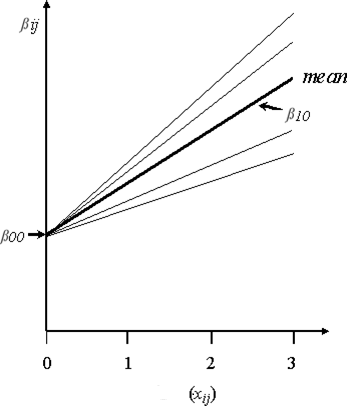I recently received this interesting question regarding Multilevel Models after one of my last blog posts:
Question: Can you tell me when a multilevel-model is not appropriate? I have data that by design is clustered but the random intercept in the null model is not significant. I have seen advice that says when this is the case all of your level 2 variation and thus the model for level 2 is over-fitted. I have heard others say that that doesn't matter use mlm anyway. Any response is most appreciated.
Answer: Is it possible that you might have random slope components? You could have a scenario where the variance component for the random intercept is not significantly different from zero, but the one for a random slope is. Visually, it would look like the picture below—you can see no variability is present for the group intercepts, but variability does appear to be present for the group slopes:
If you think you may have a random slope component, try fitting the model with your fixed effect predictors, a random intercept, and if appropriate a random slope component. After fitting the model and doing any necessary simplification, if none of the variance components for the random effects are significant, you would be assured you don’t need a MLM. Otherwise you may be assuming no random slopes are present without investigating it.

